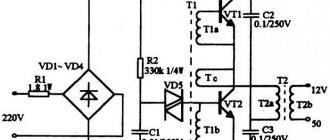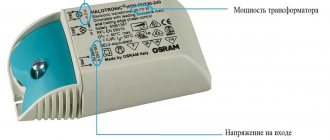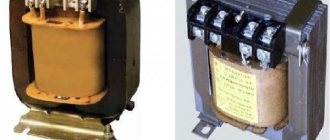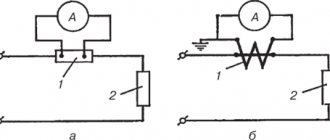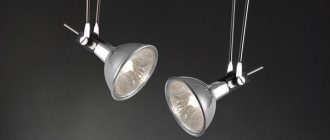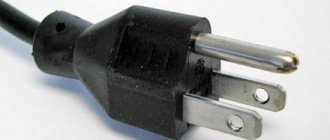Low-voltage light sources have become quite popular today. Recessed lighting fixtures with halogen lamps are often found in office premises, private sector buildings, high-rise apartments, shop window illumination and many other places where lighting is required.
The main advantage of such a lighting device is its long service life and safety when using the lamp, which is due to the low voltage level. But to connect halogen lamps to 12 volts, it is necessary to have a correctly selected transformer.
A low-voltage halogen lamp can operate on AC power only through a special power adapter - a step-down transformer. Today, electromagnetic and electronic transformers for halogen light sources are considered the most popular.
The electromagnetic adapting device is large in size and weight, which limits its scope of application. Such devices are inefficient and highly sensitive to changes in voltage in the AC network. In turn, electronic devices for 12-volt halogen lamps are safer and have many additional functions: they are equipped with a protection device against overheating, voltage fluctuations and have a soft-start function for the lamps, which greatly increases their service life.
Features of transformers for halogen lamps
To properly control the operation of a halogen lighting device, be sure to use a transformer that reduces the output voltage to 12 volts. Thanks to this, the lamps are protected from overvoltage and power surges.
Such converters normalize incoming electricity and output the required voltage level from 6 to 24 volts , depending on the halogen lamp used. Today, there are two main types of step-down transformers, depending on the design of the device:
- toroidal winding converters;
- electronic or pulse step-down transformers.
Standard winding transformers are considered the most affordable and easiest to operate , and also have good power performance. It is easy to connect a halogen light source to such a device.
The operating principle of such a converter is based on the electromagnetic interconnection of the device coils. But due to the use of the latter, such a transformer has serious disadvantages - heavy weight, reaching several kilograms, and dimensions that take up a lot of space. It is for this reason that such voltage-reducing devices are not widely used in everyday life.
What kind of lighting do you prefer?
Built-in Chandelier
Plus, the electromagnetic converting device gets very hot during operation , which can negatively affect halogen lamps. In addition, overheating of toroidal winding transformers can lead to voltage surges in the house, thereby adversely affecting other household devices.
In turn, low-voltage pulse converters, which are also called electronic transformers, have received the widest possible range of applications both in everyday life and in production. This popularity is primarily due to the low weight and dimensions of the device. In addition, such a device qualitatively reduces voltage without heating up during operation. The only disadvantage of such a transformer for 12-volt halogen lamps is the fairly high cost of the device.
Recently, pulsed step-down transformers have appeared on the electronics market, which, even at the production stage, are equipped with built-in protection against short circuits and overvoltage, which significantly extends the service life of both the converter and light sources.
Such electronic converters are often used for mounting halogen light sources in the furniture industry or suspended ceilings. According to the principle of operation, such a transformer will differ from its winding analogue in that energy conversion is achieved through semiconductor devices and electronic spare parts.
Ballast purpose
Mandatory electrical characteristics of a fluorescent lamp:
- Current consumption.
- Starting voltage.
- Current frequency.
- Current amplitude factor.
- Light level.
The inductor provides a high initial voltage to initiate the glow discharge and then quickly limits the current to safely maintain the desired voltage level.
The main functions of a ballast transformer are discussed below.
Safety
The ballast regulates the AC power to the electrodes. As AC current passes through the inductor, the voltage rises. At the same time, the current strength is limited, thereby preventing a short circuit, which leads to the destruction of the fluorescent lamp.
Heating of cathodes
For the lamp to operate, a high voltage surge is required: it is then that the breakdown of the interelectrode gap occurs and the arc lights up. The colder the lamp, the higher the required voltage. The voltage “pushes” the current through the argon. But gas has resistance, which is higher the colder the gas. Therefore, it is necessary to create a higher voltage at the lowest possible temperatures.
To do this, you need to implement one of two schemes:
- using a starting switch (starter) containing a small 1 W neon or argon lamp. It heats the bimetallic strip in the starter and facilitates the initiation of a gas discharge;
- tungsten electrodes through which current passes. In this case, the electrodes heat up and ionize the gas in the tube.
Providing high voltage levels
When the circuit breaks, the magnetic field is interrupted, a high voltage pulse is sent through the lamp, and a discharge is initiated. The following high voltage generation circuits are used:
- Preheating. In this case, the electrodes are heated before the discharge is initiated. The start switch closes, allowing current to flow through each electrode. The starter switch cools quickly, opening the switch and triggering the supply voltage to the arc tube, causing a discharge. During operation, no auxiliary power is supplied to the electrodes.
- Quick start. The electrodes heat up constantly, so the ballast transformer includes two special secondary windings that provide low voltage to the electrodes.
- Instant launch. The electrodes do not heat up before starting work. For instant starters, the transformer provides a relatively high starting voltage. As a result, the discharge is easily excited between the “cold” electrodes.
Electric current limitation
The need for this arises when the load (for example, an arc discharge) is accompanied by a drop in voltage across the terminals as the current increases.
Features of choosing a transformer
When choosing a transformer for 12-volt halogen lamps, it is imperative to take into account certain factors. First of all, determine the type of device: electronic or electromagnetic adapter . Recently, preference has been given to electronic converters for halogen light sources, which, due to their low weight and dimensions, can be used in any field of electrical engineering.
The main parameter of a step-down transformer, regardless of the type of device, is the power of the device . Due to the fact that in most cases a parallel circuit for connecting halogen lamps is used, the power indicators of the transformer should be equal to the total power of all lighting devices. For example, if two 40 W lamps are connected, then the converter power is 80 W plus a margin of 10-15%.
Naturally, purchasing a transformer with an excessive power reserve is impractical for the simple reason that the cost of the device increases significantly. In addition, such a discrepancy leads to breakdown of the converter, and often of halogen lamps. Each adapter has the minimum load required for stable operation of the device.
The output voltage parameters of the transformer must correspond to the nominal values of halogen lamps. Standard light sources are available with nominal voltage parameters of 6, 12 and 24 V. But 12 volt light sources have gained the most popularity . If halogen lighting is installed in rooms with high humidity, then you need to purchase a converter that has galvanic isolation.
To connect a large number of 12-volt lighting devices to the adapter, it is not always advisable to use one expensive device with high power ratings. It is often better to purchase several budget devices with lower power and use them to connect separate groups of halogen light sources.
This option is more practical, since if one of several adapters fails, only one group of lamps will not light, while all the other lamps will continue to illuminate the apartment. At the same time , replacing one low-power lamp device will be much cheaper than buying an expensive, powerful step-down transformer, since its price is proportional to its power ratings.
Driver or power supply for LEDs?
There are many different types of LED power supplies available on the market today. This article is intended to make it easier to choose the source you need.
First of all, let's look at the difference between a standard power supply and a driver for LEDs. First you need to decide - what is a power supply? In general, this is a power source of any type, which is a separate functional unit
Usually it has certain input and output parameters, and it does not matter which devices it is intended to power. LED driver provides stable output current
In other words, this is also a power supply. The driver is just a marketing designation to avoid confusion. Before the advent of LEDs, current sources - and this is the driver - were not widespread. But then a super-bright LED appeared - and the development of current sources went by leaps and bounds. And to avoid confusion, they are called drivers.
So let's agree on some terms. The power supply is a source of voltage (constant voltage), the Driver is a source of current (constant current). The load is what we connect to the power supply or driver.
Features of transformer installation
To connect several 12-volt halogen light sources to one step-down transformer, several popular options are used:
- into the gap of a single-key switch;
- by combining halogen lamps into separate groups.
In the standard wiring diagram, the orange and blue wires are connected to the primary terminals L and N of the converter input. In turn, halogen lamps are connected to the secondary output terminals of the step-down transformer. In this case, the wiring must be done with copper cables of the appropriate cross-section, which will ensure minimal energy losses.
To achieve uniform glow of halogen light sources, they are connected with identical conductors in a parallel circuit. In this case, the cross-section of the wires must be at least 1.5 mm square . If it is necessary to connect a large number of groups of parallel-connected halogen lamps, and the terminals at the output of the step-down converter are not enough, then additional terminals are sold in electrical spare parts stores, the main thing is that the device has enough power.
Also important is the length of the wiring; ideally it should be no more than 3 m . Such parameters are considered optimal for reducing energy losses and preventing heating of conductors. Very long wiring gets very hot, giving off some of the heat to halogen lamps, which for this reason can often fail or have different degrees of glow. In a situation where reducing the length of electrical wires is impossible for some reason, the cross-section of the latter is increased.
Basic operating principle
An electronic converting device is designed to reduce the power of conventional electric current from 220 to 12 V. In essence, it is a push-pull self-oscillator (switching power supply) with a fairly simple device. It operates according to a half-bridge conventional circuit, has the shape of a box with 4 outgoing cables: 2 for the input (220 V) and the same number for the output (12 V). The housing surface is usually made of polycarbonate, aluminum, and secured with several bolts.
Inside such a product there is a ferrite core (in the form of the letter “w” or a ring with 2 windings). The type of design is determined by the manufacturer. The second type with a ring core is easier to adapt to some of your requirements (they make power supplies for other electronic devices). Typically, the power part of the product is bipolar transistors. Their frequency is in antiphase - 30-35 kHz.
Rules for connecting a voltage converter
The procedure for connecting halogen lamps to a step-down transformer implies compliance with certain lighting wiring rules.
- When connecting halogen lamps in parallel, the same length and cross-section of electrical conductors must be maintained, going directly to different light sources. Otherwise, 12 volt lamps will have different degrees of glow, and the lighting in the room will be uneven.
- Due to the fact that the halogen lamp gets very hot, the minimum distance of the light source to the step-down transformer should be more than 20 cm.
- If an electronic voltage converter is used, then the maximum length of the wiring from the device to the lamps should not exceed 5 m. Moreover, the longer the wiring, the larger its cross-section should be. Otherwise, the wires will simply start to heat up, and this is extremely undesirable.
- It is unacceptable to install the transformer on flammable surfaces without using additional protection made of non-combustible materials.
Only by adhering to the simple rules listed above will the connection of 12-volt halogen lamps to a step-down transformer be carried out in compliance with all safety requirements.
Specifications
The voltage of halogen lamps is not only 220 and 12 volts. On sale you can find 24 and even 6 volt light bulbs. The power can also be different - 5, 10, 20 watts. Halogen lamps from 220 V are connected directly to the network. Those that operate on 12 V require special devices that convert current from the network to 12 volts - so-called transformers or special power supplies.
Twelve volt halogens work very well. Previously, in the 90s, a large 50 Hz transformer was used, which ensured the operation of only one halogen lamp. Modern lighting uses pulsed high-frequency converters. They are very small in size, but can pull 2 - 3 lamps at the same time.
On the modern market there are both expensive and cheap power supplies. As a percentage of expensive ones, about 5% are sold, and much more cheap ones. Although, in principle, high cost is not a guarantee of reliability. Cool converters, unfortunately, do not use high-quality parts, but only use clever circuit “bells and whistles” that contribute to the normal operation of the power supply, at least during the warranty period. As soon as it runs out, the device burns out.
Low voltage halogen lamps or 220 volt lamp
Naturally, many rightfully claim that it is easier to use standard 220 volt incandescent lamps . This is partly true, but despite the initial costs of installing a converter for connecting low-voltage lamps, such lighting has a number of advantages.
First of all, the service life and reliability of a halogen lamp will more than cover the cost of installing a transformer. Plus, thanks to the fact that modern adapters are equipped with additional protection systems against voltage surges and short circuits, 12 volt light sources will work much longer than standard 220 volt incandescent lamps.
Useful tips Connection diagrams Principles of operation of devices Main concepts Meters from Energomer Precautions Incandescent lamps Video instructions for the master Testing with a multimeter


